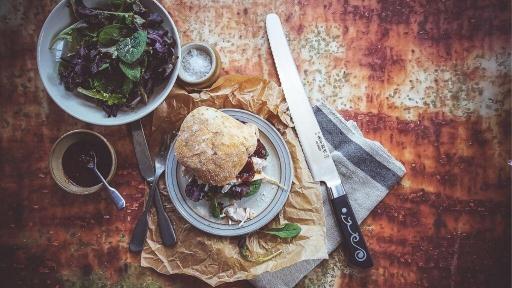Everything you ever wanted to know about butter but were too scared to ask
Well, probably not quite everything.
Given that we have already covered bread and cheese, we thought it might be time to cover what often comes between the bread and the cheese. And although many people are happy to slap a bit of cheese straight on to a hunk of bread, many much prefer there to be a little butter on the bread first.
This certainly applied to A.A. Milne’s King in The King’s Breakfast (which he wrote back in 1930), who was mortified he might miss out on his butter…
“The King said,
‘Bother!’
And then he said,
‘Oh, deary me!’
The King sobbed, ‘Oh, deary me!’
And went back to bed.
‘Nobody,’
He whimpered,
‘Could call me
A fussy man;
I only want
A little bit
Of butter for
My bread!’”
The word ‘butter’ is derived from the ancient Greek word ’bouturon’ which in turn is a combination of the words for cow – bous, and cheese – turos, stuck together. Cow cheese.
What’s interesting is that kings of old wouldn’t have touched butter with a bargepole – in the early Middle Ages butter was considered as food for peasants, probably due to the fact it was difficult to keep it from going rancid in warmer climates/seasons, unlike cheese, which generally lasts longer.
Because of this, butter is not thought to have caught on that quickly, and it is likely that the earliest types of butter would not have been made of cow’s milk but from sheep or goat’s milk, as cattle were pretty much the last animals to be domesticated.
The ancient Greeks and the Romans, much like kings of old, also regarded butter as ‘barbarian food’ and really only suitable for medical uses (according to Galen).
Things changed during the Middle Ages, at least in colder places like Scandinavia, and the first recorded exports of butter to mainland Europe from Scandinavia started in the twelfth century.
The Roman Catholic church in the sixteenth century permitted its use during Lent mainly as a fuel for lamps instead of oil, however it may not be a coincidence that the popularity of butter as a food increased from this point.
In Northern latitudes where the risk of the butter going off was not great, it was traditionally used as an emergency food store, with barrels being buried in peat bogs to crack in to when other food was scarce.
Known by the unappealing name of ‘bog butter’ (strangely not currently used as a brand name by any modern butter producers), it didn’t look great when dug up – looking a bit like grey cheese – but apparently tasted perfectly fine albeit with a bit of a boggy flavour to it.
Most butter today is in fact ‘cultured butter’ which means it is made from fermented cream, although in the US and the UK ‘sweet cream butter’ is preferred, which is made from fresh cream that has been pasteurised.
Today the largest producers of butter are the US, New Zealand and Germany, with Australia not being a major producer but nonetheless exporting a significant chunk of its domestic production.
Of course another reason we are talking about butter is that it is one of the very few ingredients that gets its own knife, along with bread and cheese.
Butter knives have gone out of fashion these days, but originally every place setting would have a butter knife exclusively for spreading butter (normally – but not always – on bread). These knives are/were rounded at the tip and not that sharp*.
There was also another type of butter knife known as a ‘master butter knife’ which was used by the wait staff to serve out butter pats from a butter dish to individual diners. These of course were not be used for spreading the butter, as this would contaminate the master knife and the butter dish.
Today (unless you’re dining with royalty of course), a butter knife is simply a knife you keep in, on or near the butter dish and – in theory – is meant to only be used for transferring butter. In practice this hardly ever happens, which may explain why butter knives are not that common any more.
The best butter in the world
It’s impossible to answer this question, however it’s easy enough to find the most expensive butter in the world, and this title goes to Président Échiré AOP, which costs $26 for 250g**. It is made by the Président dairy in the village of Échiré in western France. In Tokyo there is a shop called ‘Maison du Buerre’ (house of butter) dedicated entirely to Échiré butter. If you can’t get hold of Échiré AOP, Buerre d’Isigny AOP is pretty good too.
This is probably the last in the cheese / bread / butter series. Somehow I don’t think we’ll be writing about margarine any time soon.
*although a court in the UK did once rule that a butter knife could be an offensive weapon
**the first commenter on the site we got this info from (Taste of France below) disagreed with the implication that Président Échiré AOP is the best in the world – he reckons NZ butter is better
More Information
https://en.wikipedia.org/wiki/Butter
https://en.wikipedia.org/wiki/Butter_knife
https://tasteoffrancemag.com/trending/why-french-butter-is-the-creme-de-la-creme/
https://www.secretfoodtours.com/blog/what-does-aop-means/







